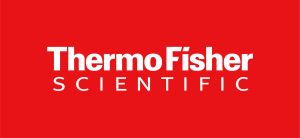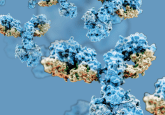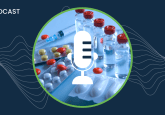Exploring biomarker testing in clinical research
In this podcast, we spoke to Amy Lavelle, Director at PPD Laboratory services bioanalytical lab (VA, USA) about the intricacies of biomarker testing in contract research organizations (CROs). Here, Amy delves into the importance of bioanalytical biomarker testing on clinical research, the prevalent types of biomarker analyses and her experience with developing and validating bioanalytical methods for biomarker testing.
Podcast transcript
[00:09] Kadeja Johnson: Hello and welcome to our podcast episode exploring biomarker testing in bioanalytical Contracts Research Organizations (CROs) sponsored by PPD Clinical Research Services, Business of Thermo Fisher Scientific (MA, USA). I’m your host Kadeja Johnson and today I’m joined by Amy Lavelle, Director of Bioanalytical Labs at PPD. Thank you so much for joining us Amy.
Now before we get started, please could you tell our listeners a little bit about yourself and your role at PPD?
[00:39] Amy Lavelle: Sure, thank you for having me. I am, as you mentioned, a Director for the Bioanalytical Labs. I specifically oversee our molecular genomics testings, our PCR testing, our flow cytometry, and I also work closely designing and executing biomarker strategy for our lab.
[01:03] Kadeja Johnson: Awesome, thank you.
[01:05] Kadeja Johnson: Can you explain what bioanalytical marker testing is and its importance in clinical research?
[01:10] Amy Lavelle: Bioanalytical biomarker testing is a crucial process in clinical research and it involves the detection, quantification and analysis of biological markers or biomarkers, in biological samples such as blood, urine, tissues, or other bodily fluids. Biomarkers are measurable indicators of a biological state or condition and they can provide insights into the physiological and pathological processes occurring within the body.
So at its core, bioanalytical biomarker testing leverages advanced analytical techniques to measure these biomarkers with high precision and accuracy. These techniques include ELISA, mass spec, and flow cytometry. Each of these methods have its own strength and are chosen based on the specific requirement of the biomarker that’s being studied.
[02:03] Kadeja Johnson: Amazing, thank you for explaining that so clearly. It’s evident that they are a crucial part of clinical research.
[02:09] Kadeja Johnson: What types of biomarkers are commonly analyzed in bioanalytical testing?
[02:14] Amy Lavelle: So, bioanalytical testing encompasses a wide array of biomarkers and they each provide unique insights to those biological processes and disease states, but some of the most commonly analyzed types of biomarkers include genomic, transcriptomic, proteomic, immunologic and cellular biomarkers. And, they’re important in clinical research. They’re used for early detection and diagnosis. They’re part of personalized medicine. They’re part of monitoring disease progression, drug development and safety testing, understanding disease mechanisms, and also they’re used for regulatory approval.
[02:55] Kadeja Johnson: Excellent.
[02:55] Kadeja Johnson: That being said, what techniques and technologies are you proficient in for biomarker analysis?
[03:01] Amy Lavelle: Here at PPD Labs at Thermo Fisher Scientific, we are proficient in a range of cutting-edge techniques and technologies for biomarker analysis. Some of the key methods we specialize in include ELISA, LC−MS, flow cytometry, next-gen sequencing, PCR and quantitative PCR. The field of biomarker analysis is continuously evolving with new technologies and methodologies emerging to enhance sensitivity, specificity and throughput. So, innovations such as single-cell sequencing, multiplexed assays and advanced imaging techniques are expanding the horizons of biomarker research. The integration of artificial intelligence and machine learning is also revolutionizing data analysis, which enables the discovery of novel biomarkers and predictive models with unprecedented accuracy.
[03:56] Kadeja Johnson: That’s amazing. I think we’ve especially seen how AI and machine learning has been integrated into these types of analysis.
[04:03] Kadeja Johnson: Can you describe your experience with developing and validating bioanalytical methods for biomarker testing?
[04:09] Amy Lavelle: Sure. I did development and validation for biomarker testing for quite some time in my career. So, developing and validating bioanalytical methods involves scientific rigor but innovative problem solving. So, in my experience in the field, this has been challenging and exciting, and it involves creating robust methods that can reliably detect and quantify biomarkers. So first, we have to understand the biomarker and its context. The first step in method development is gaining a deep understanding of the biomarker of interest, including its biological significance, the matrix in which it’s found − maybe blood, urine, tissue, and the expected concentration range in the study. This foundational knowledge guides the selection of the appropriate analytical technique. For example, if developing a method to quantify a low abundant cytokine in plasma, I might choose a highly sensitive technique like ELISA, ensuring that the assay could detect even minute changes in cytokine level.
Next, we select and optimize that analytical technique. So based on the biomarker’s characteristics, we select the most suitable analytical technique, as I mentioned, maybe ELISA, mass spec, or flow cytometry. Each technique has its strengths, and the choice depends on factors like sensitivity, specificity and throughput.
Then we work to develop robust sample preparation protocols. So sample preparation is a critical step that can significantly impact the accuracy and the precision of the assay. We develop protocols to efficiently extract and purify the biomarker from complex biological matrices, ensuring minimal loss and degradation. This is especially important for something like a nucleic acid biomarker, where it will then go into PCR testing.
We also have to establish appropriate controls. These are essential for quantifying the biomarker. Due to the endogenous nature of pharmacodynamic biomarkers, surrogate controls are often used in conjunction with available matrix controls.
Then we move into method validation. So we assess accuracy and precision. Accuracy refers to how close the measured values are to the true values, while precision indicates the reproducibility of the measurement. We evaluate sensitivity and specificity. Sensitivity would be the ability to detect low concentrations of the biomarker, while specificity ensures that the method accurately measures the biomarker without interference from other substances. This is important when measuring a change in a biomarker following treatment.
A unique aspect of biomarker analysis, which is different from our standard bioanalysis, is testing parallelism. So parallelism for biomarkers demonstrates the change in biomarker concentration between an endogenous biomarker when compared to a recombinant reference marker within a specified range. We validate this by analyzing a serial dilution of a high concentration sample and ensure relative accuracy and precision when compared to a curve.
And finally, we look at robustness and, of course, stability. So robustness tests the method’s ability to be run multiple times with small variations in experimental conditions, like temperature change or pH change. And then we also look at stability. So stability testing involves looking at different storage conditions because, of course, we’re getting samples from different clinical sites. So we look at room temperature stability, refrigerated stability, frozen stability, and we look at this over time. This ensures that the biomarker remains stable from sample collection to analysis.
[07:57] Kadeja Johnson: Thank you so much. These are fantastic answers. Thank you for explaining it so well.
[08:02] Kadeja Johnson: With all this in mind that you’ve mentioned, how do you stay updated with regulatory guidelines and requirements for biomarker testing?
[08:10] Amy Lavelle: Staying updated with regulatory guidelines and requirements is absolutely crucial to ensure that our work meets the highest standards of quality, safety and compliance. The regulatory landscape is dynamic, with frequent updates and new guidelines being issued by various agencies worldwide. So a couple of ways that I stay up to date and ensure that my work remains compliant is first, regularly reviewing regulatory websites and publications. So this includes the [US Food and Drug Administration], the [European Medicines Agency], [International Council Harmonisation of Technical Requirements for Pharmaceuticals for Human Use] guidelines, frequently visiting the websites of major regulatory bodies to ensure that there aren’t − because sometimes they do release guidance without any large announcements. So we want to make sure that we’re up to date with the latest guidelines, updates, and draft documents that are essential for biomarker testing.
Also, scientific journals and publications, things like Bioanalysis, the Journal of Pharmaceutical and Biomedical Analysis, Clinical Chemistry, often publish articles on new regulatory requirements and best practices for bioanalytical development and validation.
I also participate in professional organizations and conferences. So, I’m an active member of professional organizations such as the American Association of Pharmaceutical Scientists, or AAPS. Organizations like this provide valuable resources, including webinars, white papers and other updates to keep me informed about regulatory changes. Also attending conferences and workshops, regularly attend conferences, workshops, symposiums focused on bioanalysis and regulatory science. These may include the AAPS Annual Meeting, the [European Bioanalysis Forum] Open Symposium, and the Global CRO Consortium. These are excellent opportunities to learn about the latest regulatory update, network with experts and participate in discussions on emerging trends.
And then, of course, engaging in continuous learning and training. So there are online courses and certifications for [Good Laboratory Practice] and [Good Clinical Practices]. And then within our organization, we have internal training programs that we design and disseminate across our staff to ensure that everyone is up to date.
[10:30] Kadeja Johnson: Thank you. It seems that there’s a lot of resources that you have access to to keep up to date. And as you mentioned, it can be quite hard to know what’s going on if you aren’t in these spaces, like attending conferences and reading all these journals. So that’s fantastic. Thank you so much for answering.
[10:44] Kadeja Johnson: Finally, looking at the field now and perhaps in the near future, what recent advancements in biomarker testing are you most excited about?
[10:54] Amy Lavelle: Oh, so many. The field of biomarker testing is experiencing a thrilling wave of advancements and some of the most recent exciting developments that I see that have the potential to transform health care include single-cell analysis. So single-cell analysis allows researchers to study the molecular characteristics of individual cells rather than averaging signals from bulk populations. So there are techniques like single-cell RNA sequencing and single-cell proteomics that are at the forefront of this innovation. These provide an unprecedented resolution in understanding cellular heterogeneity and complex biological processes. For example, single-cell analysis can reveal the diverse cell types within a tumor, uncovering insights into cancer progression and treatment resistance. It enables the identification of rare cell populations that might be crucial for disease diagnosis and therapy.
Another one is high-throughput multiplex assays. So multiplex assays allow us to simultaneously measure multiple biomarkers in a single sample. So technologies like Luminex, XMAP, and Multiplex ELISES are leading this. The ability to analyze multiple biomarkers at once significantly enhances the efficiency and depth of biomarker studies. This is particularly valuable in complex diseases like autoimmune disorders and cancer where multiple pathways are involved. It provides a comprehensive snapshot of the biological state and allows for accurate, more accurate diagnosis and personalized treatment plans.
Liquid biopsies also is something that we’re pretty familiar with but continues to evolve. So this involves the analysis of biomarkers from non-invasive samples like blood, urine, saliva, rather than tissue biopsies. There are techniques such as circulating tumor DNA analysis and exosome profiling that are part of this liquid biopsy testing. This can be a game changer for early disease detection, monitoring treatment response, and understanding disease progression. It also offers a less invasive, more accessible and repeatable method for obtaining critical biomarker information. For instance, circulating tumor DNA analysis can detect cancer mutations and track tumor dynamics in real time which provides valuable insights for personalized oncology.
We already mentioned artificial intelligence and machine learning. So AI machine learning algorithms are being integrated into biomarker analysis to enhance data interpretation, pattern recognition, and predictive modeling.
Also, I’m going to keep going. Spatial transcriptomics and proteomics involve mapping of spatial distribution of RNA and proteins within tissues and also provides insights into the spatial organization of cellular processes. So these can help researchers visualize how to differentiate cell types and how they interact with their native tissue environment which offers a deeper understanding of tissue architecture and disease mechanism. So, for example, spatial transcriptomics could reveal how immune cells are distributed within a tumor which will then inform immunotherapy strategies.
Another one is CRISPR-based diagnostics. CRISPR is not really new. It won the Nobel quite some years ago, but it’s well known for its gene editing capabilities and is now being adapted for diagnostic purposes. CRISPR-based assays can detect specific nucleic acid sequences with high precision. And it’s exciting because it offers rapid, accurate and cost-effective detection of genetic mutations, pathogens and other biomarkers. This is exciting for infectious disease diagnostics where quick and reliable detection is crucial. So, for example, CRISPR-based tests can identify viral RNA from pathogens like SARS, providing a powerful tool for managing pandemics.
And with all that, the future of biomarker testing is incredibly promising. These advancements pave the way for more precise, personalized and effective health care. The evolution of technologies and methodologies will further enhance our ability to diagnose diseases early, monitor treatment responses and develop more targeted therapies. The integration of AI and multi-omics approaches will drive forward the discovery of novel biomarkers and predictive models, and this will ultimately improve patient outcomes and revolutionize health care.
[15:41] Kadeja Johnson: Brilliant. These do seem exciting. I can’t wait to hear more on the progresses that are being made.
[15:47] Amy Lavelle: I think the future of biomarker testing is exciting. It offers a lot of opportunities, but it also requires a breadth of technical capabilities. And so, being able to work scientifically as a CRO with a sponsor and really identify the appropriate approach and make sure that the testing is correct for their study and provide that scientific collaboration is really important to us at PPD, and that’s something that makes exploring the biomarker field even more exciting.
[16:25] Kadeja Johnson: It does, especially for early detection of some of these rare and unmet medical conditions that a lot of patients have, or not even rare, just like the current conditions. For example, ALS. I know there’s a lot of progress in the field for diagnosing ALS, so it’s incredible what’s happening. Really exciting.
[16:44] Kadeja Johnson: Thank you so much for sharing your experience and insights with us, Amy. It was a pleasure to speak with you today. Thank you so much for joining us.
[16:51] Amy Lavelle: Thank you for having me.
[16:53] Kadeja Johnson: If you’d like to learn more, you can visit PPD part of Thermo Fisher Scientific.
About the Speaker:

Amy Lavelle
Director, Labs
Molecular Genomics and Flow Cytometry
PPD clinical research business of Thermo Fisher Scientific
Amy Lavelle is a seasoned research scientist and biopharmaceutical professional with over 18 years of experience in bioanalytical research. She holds a BS in Biology and a PhD in Human and Molecular Genetics from Virginia Commonwealth University. Amy began her career at Commonwealth Biotechnologies, Inc., and later joined PPD clinical research business of Thermo Fisher Scientific. She has progressed through various roles, currently serving as Director of Labs, where she oversees operations in Biomarkers, Molecular Genomics, and Flow Cytometry.
Throughout her career, Amy has focused on project management, regulatory compliance, and client relations, significantly contributing to Phase I-III clinical trials and pre-clinical studies. She is an active member of professional organizations like AAPS and ASCGT and has shared her expertise through numerous publications and conference presentations.
The opinions expressed in this interview are those of the interviewee and do not necessarily reflect the views of Bioanalysis Zone or Taylor & Francis Group.
In association with:







